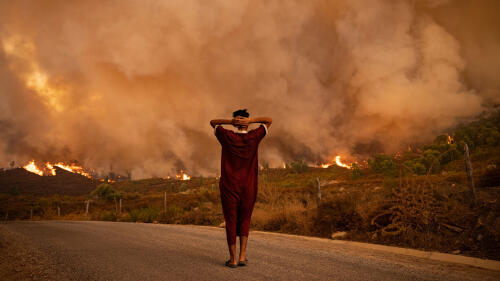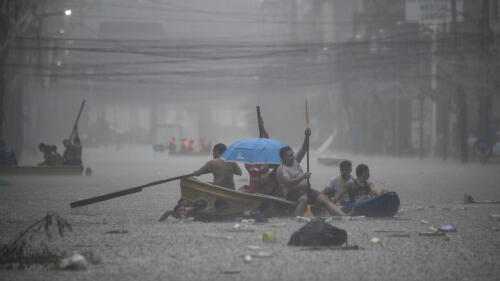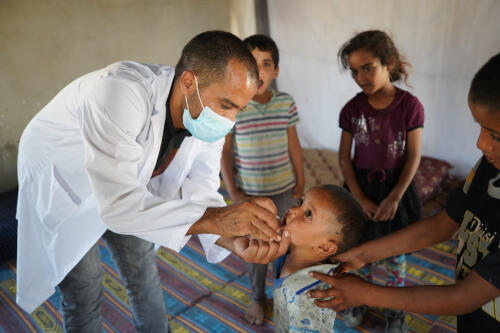environment
Wherever people look, climate change is inflicting ever greater physical, economic, and mental costs on people and communities. From the impact of extreme weather events on food security to the growing spread of infectious diseases as weather patterns change, and with the rise of deadly heat waves, it is undeniable that what harms our planet also harms our health. To meet the Paris Climate Agreement targets of limiting global temperature rise to under 1.5°C (2.7°F), every sector—including health care—must undergo decarbonization in adapting to this new reality. Health care is one of many sectors fueling the climate crisis, emitting more global carbon dioxide (CO2) emissions than the shipping industry. In a new study, Unitaid sought to answer whether switching from one drug to another could provide lifesaving benefits while reducing carbon emissions. The findings reveal that this is not only possible, but also already...
The warming climate doesn’t only melt ice caps and bleach coral reefs but also puts your health at risk. Climate change is no longer a far-removed issue, able to be cast off as a problem “of tomorrow.” Climate change alters health both through long-term stressors, such as air pollution1 and vector-borne diseases2, and through acute events, such as heat waves3 and hurricanes.4 These long and short term elements collectively influence public health around the world. Climate change has health consequences from the scale of entire populations all the way down to the level of your cells.5 Here are six things that are sometimes forgotten regarding climate and health: Climate change is associated with infectious disease spread As temperatures rise, disease vectors like mosquitoes and ticks move northward into newly habitable terrain.2,6,7 This means that diseases that were previously only endemic to t...
China has unveiled an action plan on the green development of data centers, specifying a set of targets to accelerate the low-carbon transition of the sector. By 2025, the average power usage effectiveness (PUE) of data centers, a metric for energy efficiency, will be lowered to less than 1.5, according to the plan jointly issued on Tuesday by the National Development and Reform Commission, the Ministry of Industry and Information Technology and two central government agencies. The plan also aims to increase the utilization rate of renewable energy in data centers by 10 percent annually. As an important infrastructure for development of new quality productive forces, data centers are among the sectors where energy use grow rapidly in China. It is expected that data centers’ power usage in the country will climb by 15 percent annually. The action plan proposed that by the end of 2030, data centers across the country will see their average PUE, and ener...
Relentless rain drenched the northern Philippines on Wednesday (Jul 24), triggering floods in Manila and deadly landslides as Typhoon Gaemi intensified the seasonal monsoon. Rescuers were deployed across the densely populated capital to help evacuate people from low-lying homes after downpours turned streets into rivers, trapping vehicles. People clutched flimsy umbrellas as they waded through thigh-deep murky water or used small boats and shopping trolleys to move around. “The disturbance it caused is great. The waters reached the second floor of our house,” Nora Clet, a resident, told AFP. Restaurant employee Rex Morano said he was not able to work due to the “very high” floodwaters. A state of calamity was declared for Manila, unlocking funds for relief efforts, after the state weather forecaster warned of “serious flooding” in some areas. Government offices were shut and classes suspended, more than 10...
A poliovirus variant has been detected in six wastewater samples in Khan Younis and Deir Al Balah, two cities in southern and central Gaza. In a Facebook post on Friday, the Gaza Health Ministry called it a “health disaster.” The testing, done in co-ordination with UNICEF, found the presence of Type 2 poliovirus, which causes the polio disease. Officials in Gaza said the presence of the virus was caused by the severe congestion of people in small areas and the scarcity of available water in the strip. The samples were taken from sewage water that runs between densely populated areas and the tents of displaced people. Polio is a highly infectious disease that can infect the central nervous system and damage nerve cells that activate muscles. However, in some cases, it causes no symptoms and goes undetected. No one in Gaza has been treated for polio-related symptoms yet, the WHO told The Associated Press. Similarities to Egyp...




